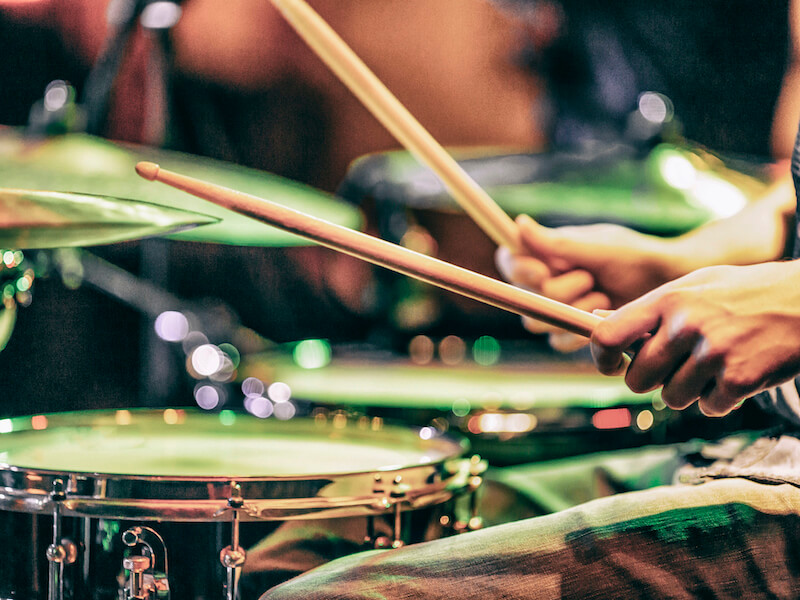
Musicians rock. They bring so much joy to our lives with their performances. The downside is that music is nearly always loud, in fact, many individuals prefer it that way. The musicians themselves are at an even greater risk of hearing damage since they are subjected to loud music just about every day.
Whether your livelihood relies on music or not, you’ll still want to be able to hear your favorite songs when you’re pushing 60, 70, or 80. For musicians, protecting their hearing is the key to a long and successful career. For the rest of us, ear protection is the secret to a lifetime of musical fulfillment and enrichment.
Oftentimes it can be surprising how loud music can be
Most people would say that a jet engine is really loud.
But what about music? People may not be so quick to answer that question if you ask them if a violin or acoustic guitar is loud. Imagine their surprise when they discover the reality: That can also be loud music! Even classical music can get to fairly high volumes that can easily harm your hearing.
A violin, for instance, can produce sounds well over 90 dB. A leaf blower is around this loud. To put that into context, the European Union laws dictate that any work environment louder than 85 dB calls for the use of hearing protection.
And if you’re working with music day in and day out, consistent exposure to that sort of volume, especially without hearing protection, can seriously harm your hearing over time.
Can you safeguard your ears from noise damage?
Okay, now you’re aware that musicians need to safeguard their hearing (especially if they want to keep on rocking out for many years). So how can musicians continue to enjoy their music while also preserving their hearing?
Well, here are a couple of simple things musicians can do:
- Take breaks: Your ears are the same as any other part of your body: they can become exhausted and will often benefit from rest. So give yourself “hearing breaks” frequently. This will help prevent your ears from becoming overwhelmed with sound (and damage). Regarding hearing, how long you’re exposed is nearly as important as how loud it is. Taking breaks can be the difference between just enough stimulation and too much!
- Track your volume: Everybody knows the old saying “knowledge is power”. So knowing volume levels of sounds around you will help you protect your hearing. Usually, this is as easy as tracking your volume settings on amps and receivers. But you can also track day-to-day volume levels of external noises using a volume meter app that you can download on your cellphone. If the meter detects volumes above 85dB regularly, you’ll have to do something about this.
hearing protection is important
Needless to say, the single most beneficial thing you can do to protect your ears is simple: using hearing protection of some kind. Lots of musicians are concerned that ear protection will mute the sound and effects its overall sound quality. But depending on what kind of hearing protection you use, that may not always be accurate.
- Ear plugs made mainly for musicians: Disposable earplugs are something that’s likely very familiar to most individuals. They’re pretty good at stopping a lot of sound though they sometimes don’t fit comfortably. They aren’t hard to find, aren’t expensive, and can be disposed of easily. For musicians, they aren’t a great solution. But earplugs made just for musicians are also available at a slightly higher cost. These earplugs use cutting-edge manufacturing methods (mostly they’re made out of very distinct materials and are designed to fit comfortably in the ear) to maintain audio fidelity while decreasing the noise you hear by around 20dB. This option is perfect for musicians who require a light to moderate level of protection (and who don’t have a ton of money to invest in earplugs, or are likely to misplace them).
- Electronic earplugs: Electronic earplugs work in essentially the same way as high-quality, non-electronic earplugs. The earplug itself will block out the majority of the sound. What you hear will instead be piped in by the earplug itself. This solution is perfect for those who work in particularly loud environments, and who want more options in terms of volume control.
- In-ear monitors: Electronics are a major part of modern music. An in-ear monitor takes those electronic signals and transmits them directly to a device placed in your ear (called an in-ear monitor). Most monitors are little speakers that fit snugly and block out most sound while playing sounds you want to hear at safe volumes. This means you can hear exactly how you sound, at a volume you control. In-ear monitors are practical for those who work primarily with electronically amplified instruments.
Safeguard your ears, and protect your career
It’s never too late to take measures to protect your hearing, but it’s definitely a good idea to start sooner rather than later. Everybody can safeguard their hearing and future with ear protection options for every budget. Remember that you’re investing in your career by utilizing hearing protection for musicians. By doing so, you will be able to enjoy making music for as long as you want to.
Contact us so we can help you get started.